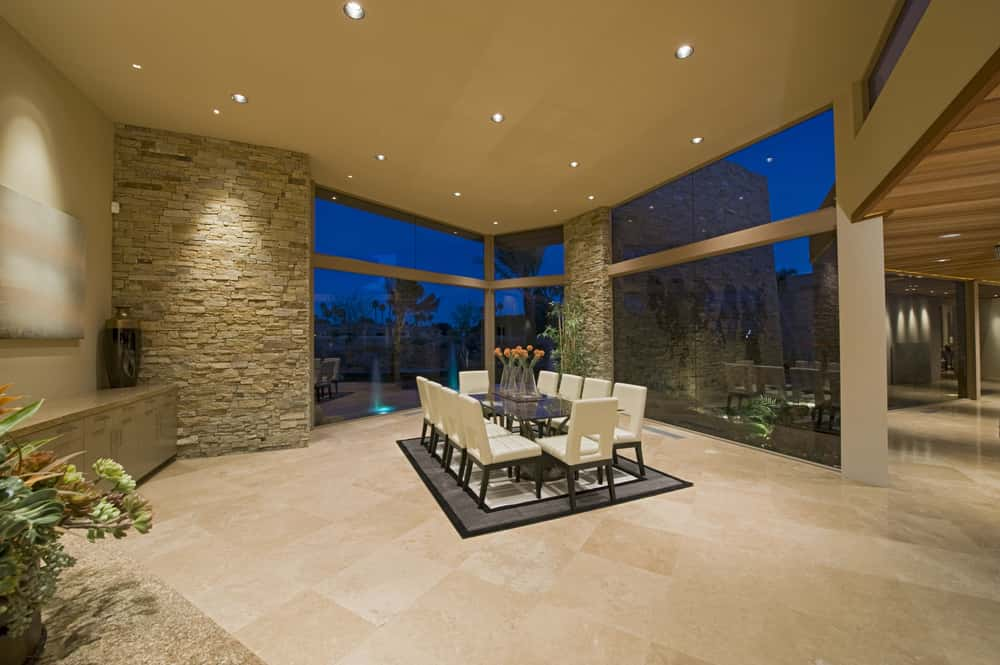IPS or Indian Patent Stone flooring is a basic type of Indian-style concrete flooring known for its excellent wearing properties. Generally, a concrete mix proportion of 1:1:5:3 (cement, sand and stone aggregates) is used for IPS flooring specification. It is used for all types of floors.
The flooring thickness of concrete ranges from 25 mm to 50 mm and is decided based on the nature of use. You can choose the IPS flooring thickness based on the requirement of the work.
For example, a 75 mm floor thickness is ideal for floors in a residential property, whereas a 150 mm floor thickness is required for an industrial floor. We hope you’ve now got a brief understanding of what is IPS flooring.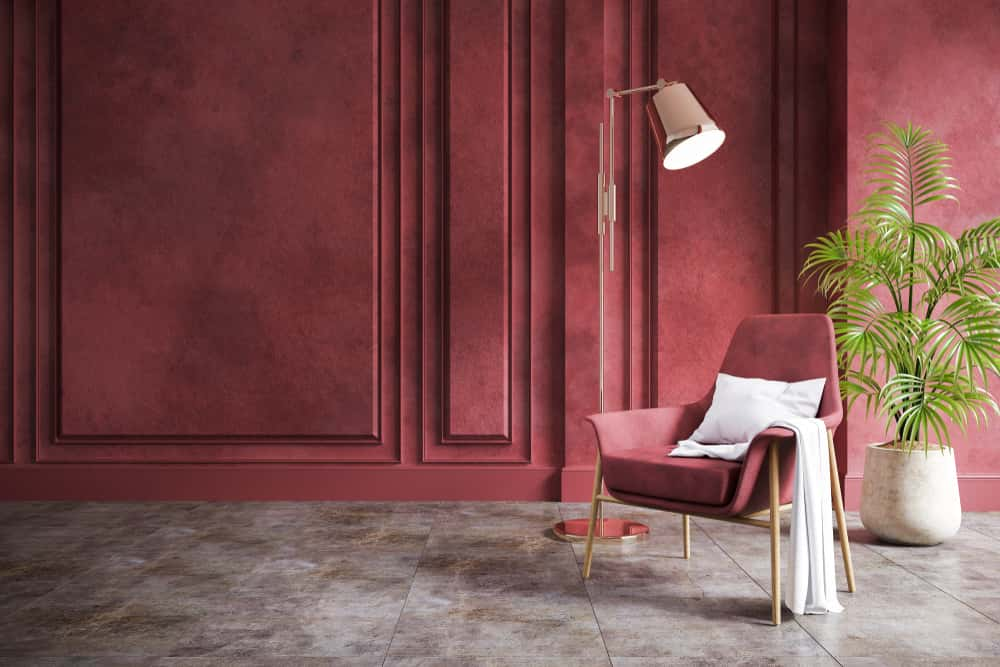 Let us now understand the benefits of this type of flooring below.
Let us now understand the benefits of this type of flooring below.
Benefits of IPS Flooring
IPS Flooring is commonly adopted in residential, institutional, commercial, and public buildings. Before considering IPS flooring as an option for your residential construction, you can peruse the various advantages of Indian Patent Stone flooring.
- Durability: IPS flooring is highly durable. It can outlast most other components of the building if appropriately constructed.
- Energy Efficient: An IPS floor features high thermal mass, which helps enhance the internal atmosphere within the dwelling. As a result, the energy demand for thermal comfort is reduced.
- Stiffness: An IPS floor possesses adequate stiffness required to carry imposed loading. As a result, it doesn’t deflect under the applied load, which helps avoid problems in non-structural elements like doors.
- Damp Resistance: An IPS floor is non-absorbent, providing good resistance to dampness. This also makes it ideal for water-retaining floors and stores.
- Fast Construction Speed: An IPS floor can be constructed quickly and thus augment the speedy completion of the ground floor. Precast flooring systems further help reduce the labour required on the construction site.
- Fire Resistance: Being a non-combustible material, concrete helps in building a fire-resistant floor needed for fire-hazardous buildings.
- Maintenance Cost: IPS floor is easy to clean, and the maintenance cost is also significantly less.
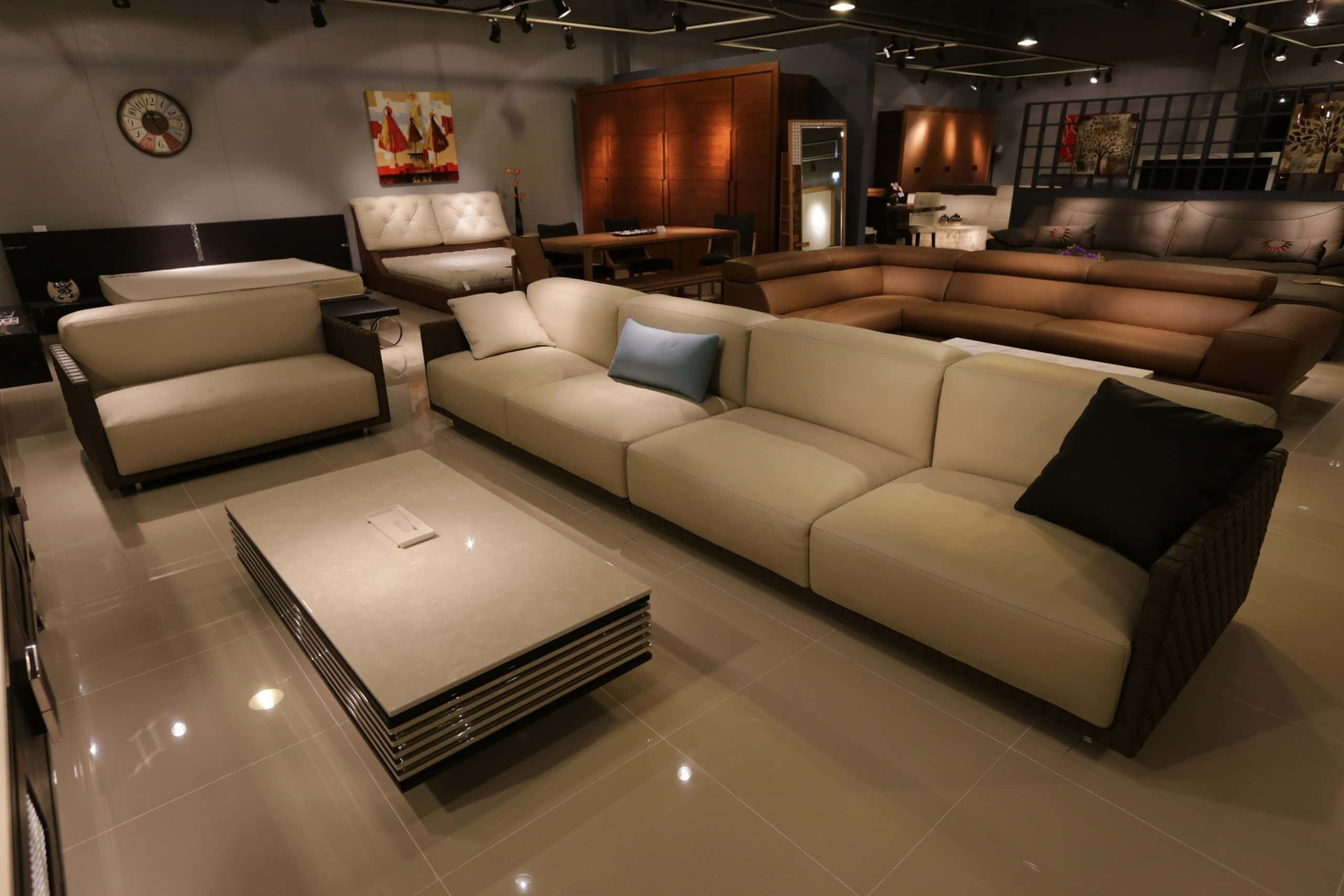
How to Use IPS flooring?
The good news is that it is possible to have IPS flooring in many different colours to boost your home’s aesthetics. Yes, you read that right. It’s a regular but beautiful floor which can either be grey or coloured. Red Oxide flooring, which is one of the most widely used floorings in old houses, is essentially IPS flooring which is coloured in red.
IPS floors use a sealer or wax coat to preserve the colour and prevent stains. They are adopted by many building owners.
You can use colourful IPS flooring to enhance your home décor. As it is used for all types of floors (residential, commercial and industrial), it is available in smooth and rough finishes.
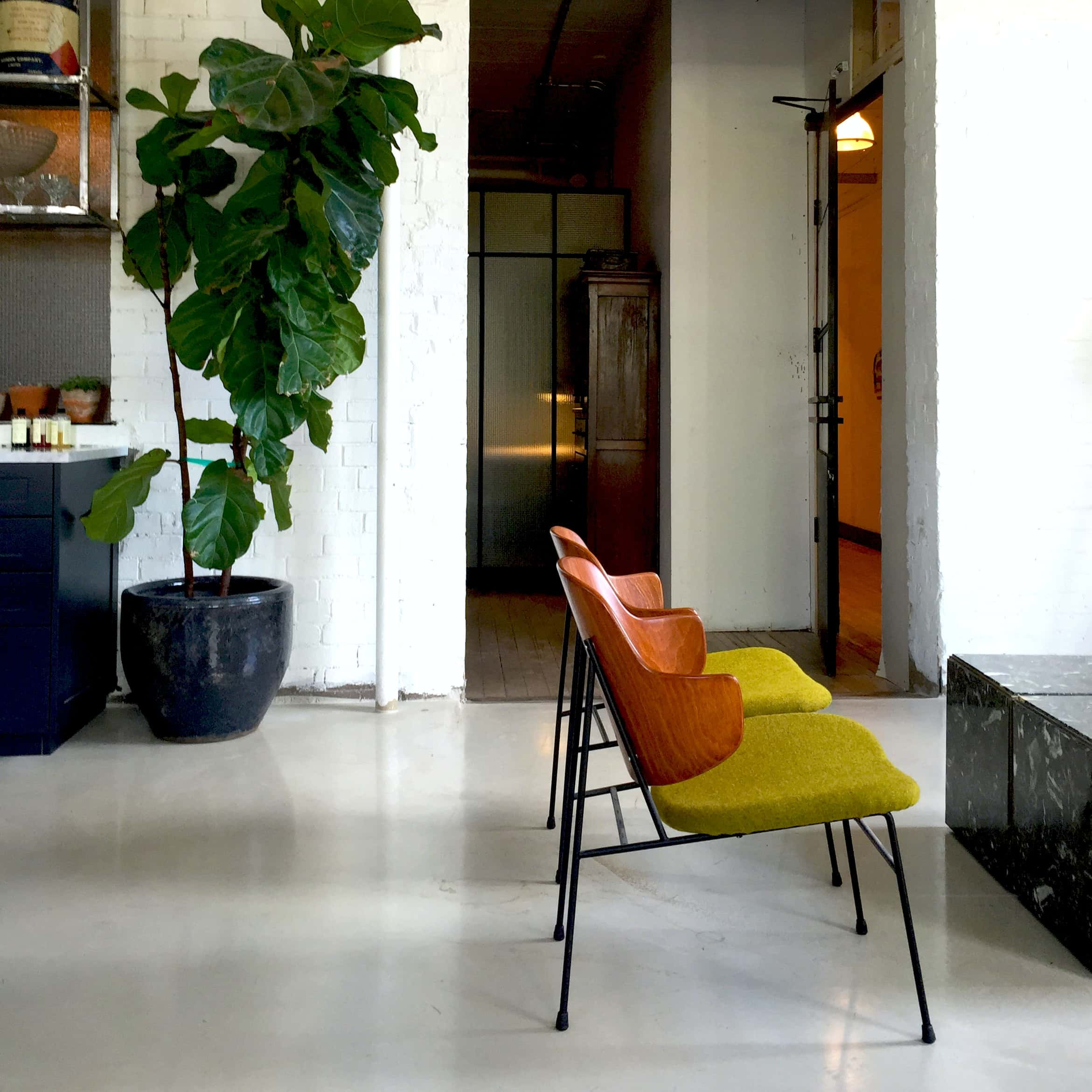
Construction Procedure of IPS flooring
Here is a step-by-step guide to the IPS flooring construction process:
- Start by marking a reference level on the wall. Next, use a water level tube to transfer this marking to the entire location for which flooring is required.
- Make sure the water does not contain any air bubbles. Place both ends together and ensure the water is at par with the water level. Use a line marker to make a permanent reference mark across the entire flooring area.
- Mark the required flooring thickness level and ensure the needed slope of flooring by providing dummy level dots with every 1 or 2 meters.
- Once the dummy concrete dots are fully settled, pour the specified concrete mix in panels to mitigate shrinkage cracks. Keep in mind that for indoor flooring, the size of the panel must not be more than 3 square meters, and for outdoor flooring, it should not exceed 2 square meters.
- Fix aluminium, glass or brass strip in cement mortar. Ensure that their tops are at adequate levels based on the slope. Allow it to harden for a minimum of 36 hours.
- Use a straight edge to level the surface after pouring the concrete. Give it a proper finish using a wooden float or trowel.
- Keep in mind that final troweling must be performed before the concrete becomes hard, as adequate pressure is needed to create a firm impression on the concrete surface.
- Make sure you do not leave any marks on the finished surface, and the cement slurry must not spread on the surface.
- To give a glossy look to the surface, spread 2 to 3 mm thick neat cement punning over the concrete surface and let it soak into the concrete. Next, give a glossy finish to the IPS concrete surface by using a metal trowel.
- Spread wet Hessian clothes over the IPS concrete flooring surface for curing it. Allow it to settle for 15 days.
- If you want to give a smooth and better finish to the surface, make use of a Vacuum dewatered machine. In addition to preventing concrete surface cracks, it also augments the abrasion resistance of the surface.
- You can also add polyurethane fibres (in small portions) to further avoid surface cracks. This kind of concrete is referred to as Ferro cement concrete.
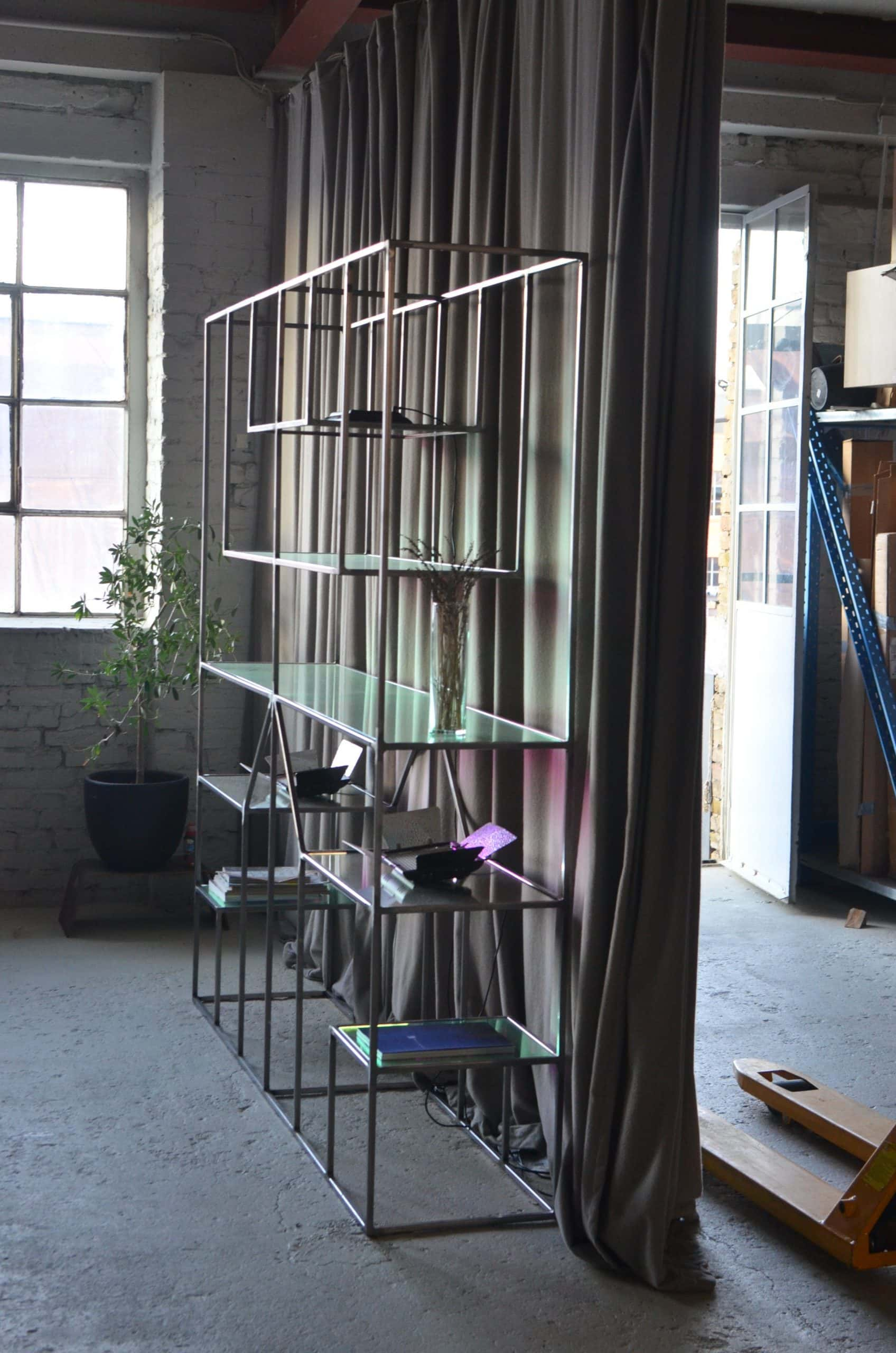
Parameters for Construction of Indian Patent Stone Flooring
The information below will give you a detailed idea about the various Indian Patent Stone Flooring parameters. Read on to understand how to do IPS flooring.

1. Glass/Aluminium/PVC Strips for IPS Flooring
As per the description of the item in the Schedule of Quantities, glass/aluminium/PVC strips are used to separate the panels. The slope is retained as per the marking.
2. Concreting Process of 50 mm Thick IPS Flooring
The underlayer of concrete must be 38 mm thick. The mix proportion should be 1:2:4 (1 portion cement, 2 portions coarse sand and 4 portions graded stone aggregate- 12.5 mm and downgraded). The flooring is laid in panels of the same sizes of 2 SqM.
The concrete mix is prepared and poured into the location. A wooden straight edge is used to level it up. It is beaten up using a trowel till the slurry comes on top.
To lay IPS on the RCC slab, it is coated with cement slurry @2.75 kg of cement per SqM. No slurry is required if IPS is provided on lean concrete.
12 mm thick cement mortar (1:2) and cement slurry @2.2 kg of cement per SqM are used to finish the flooring. Colour pigments can also be added to the flooring if required.
3. Flooring Cost of Ceramic Tile Per Square Foot India
High-quality finishing is all that is needed for single-layer IPS flooring. The panels are laid on alternate days, and the edges are protected effectively.
4. Measurement of IPS Flooring
IPS flooring is measured in SqM. The finishing (neat cement finish), an important part of IPS flooring, cannot be measured or paid separately in tender or bill of quantity.
5. Concreting Process of 75 mm Thick IPS Flooring
The general specification for 75 mm, thick IPS flooring is similar to 50 mm thick IPS flooring. However, the underlayer of concrete should be 63 mm thick with a 12 mm thick top layer.
6. Indian Patent Stone in Skirting/Dado of 19 mm Thick
IPS flooring in skirting/dado of 19 mm thick is done on vertical surfaces. It consists of the following two layers:
- Base Layer: 12 mm thick PCC 1:2:4 ( 1 portion cement, 2 portion sand, 4 graded stone aggregate of size 12 mm and down). A 7 mm thick plaster with CM 1:2 is used for finishing.
- Final Layer: Neat cement @2.2 kg/ sq m is used to give a smooth finish to the final surface.
7. Glass Strip for Indian Patent Stone Flooring
The glass strip used for IPS flooring ranges from 45 to 70 mm in thickness. Usually, 4mm thick glass strips are cut from sheet glass depending on the specifications. The strips must not have any angular sharp edges or bents.
They are fixed in the specified pattern and line with the required slope and cement concrete 1:2:4 at regular intervals.
8. PVC Strip for Indian Patent Stone Flooring
PVC strip for IPS flooring is cut from PVC sheet depending on the specifications. Care should be taken to ensure the strips are free from angular sharp edges or bents.
They are fixed in the specified pattern and line with the required slope and cement concrete 1:2:4 at regular intervals.
9. Measurement of Glass and PVC Strip for IPS Flooring
PVC strip/ Glass strip used for IPS flooring is measured in Running Meter.
Concluding Remarks
We hope the above information helped you to understand everything about IPS flooring. Need further help with your home interiors? Visit the official website of HomeLane to explore some unique home décor ideas. It is a one-stop solution for all your modern interior design needs.
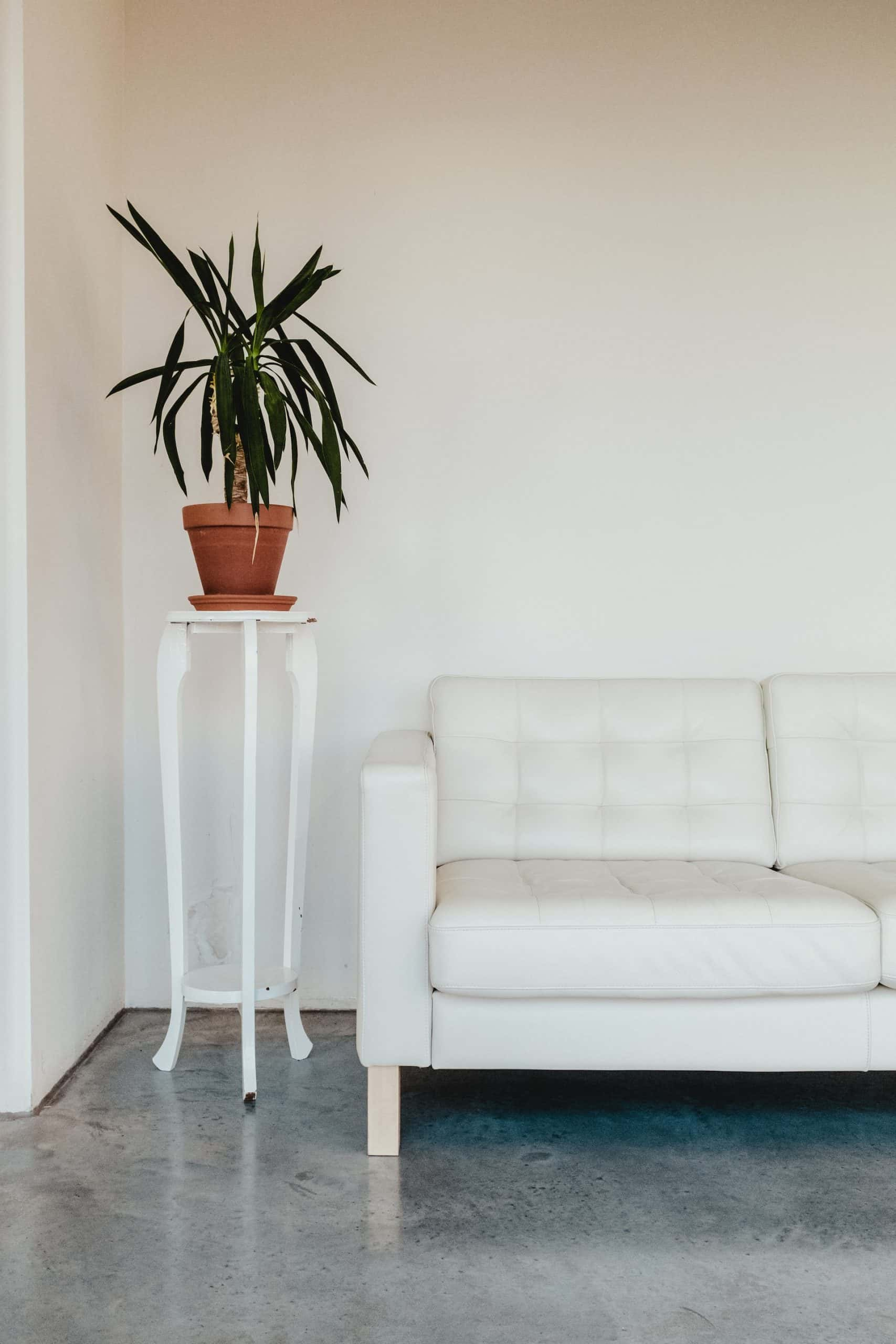
FAQs
1. What is IPS flooring?
IPS flooring stands for Indian Patent Stone flooring which is known for its good wearing properties. Being used in all types of flooring, the IPS flooring has a concrete mix proportion of 1:1:5:3 (cement, sand, and stone aggregates). Based on the nature of the flooring, the thickness of the concrete is decided. It ranges between 25 mm to 75 mm. Usually, residential buildings opt for 75 mm thickness.
2. What is IPS material?
IPS material used for IPS flooring is a mix of concrete. The mix proportion is 1:1:5:3 (cement, sand and stone aggregates). The base comprises plain cement concrete (PCC base), which is 3 to 4 inches thick.
Depending on the type of use, the thickness of concrete is chosen for flooring and laid over the concrete base (1:4:8). It ranges between 25 mm to 75 mm.
A 38 mm thick underlayer of concrete is used for 50 mm thick IPS flooring. The mix proportion is 1:2:4 (1 portion cement, 2 portions coarse sand and 4 portions graded stone aggregate- 12.5 mm and downgraded). In the case of 75 mm thick IPS flooring, a 63 mm thick underlayer of concrete is used along with a top layer 12 mm thick.
3. What Is the Difference between VDF and IPS Flooring?
| IPS Flooring | VDF Flooring |
| IPS flooring stands for Indian Patent Stone flooring, which is a regular type of flooring used for all kinds of floors. It is known for its good wearing properties. The proportion of concrete mix used is 1:1:5:3 (cement, sand and stone aggregates). | VDF flooring stands for Vacuum Dewatered Flooring, used for laying high-quality concrete floors. Under this system, the optimum level of water-cement ratio is achieved by removing the excess water from the concrete as soon as it is placed. The key feature of this process is the dewatering of concrete using the vacuum process. |
| It is also regarded as affordable flooring, commonly adopted in many structures such as commercial, institutional, residential and public buildings of all types. | VDF flooring is majorly used for heavy traffic movement and high abrasion. It is widely used in making railway platforms, concrete roads, bridges, industrial floors, pre-cast concrete products, RCC roads etc. |
4. Why Use IPS Flooring in a Building?
IPS flooring is highly resilient and can withstand high temperatures, heavy furniture or the risk of scratches on its surface and almost anything. It is highly durable and will last for many years. IPS flooring is also considered quite affordable, making it an economical option. It is more affordable than many other flooring materials, like decorative ceramic tiles.
Another major benefit of using IPS flooring is that it is easy to clean and requires very little maintenance. IPS flooring comes in a variety of design options. It need not be grey and dull. It can be coloured and customized to suit any design style. Due to its resilience and durability, IPS flooring can withstand the natural effects of rain and the sun. Thus it is suitable for areas like patios and terraces that are exposed to the weather elements.
5. What is the procedure for the construction of IPS flooring?
Here is the construction procedure for IPS flooring:
- Clean the floor by using a brush and water wash.
- Use spirit levelling to level mark the area at 2-3 metre intervals on the surrounding wall.
- Next, construct a concrete dummy dote at an area of 2 to 3 square metres.
- Now pour the prepared concrete mix into panels.
- Level the surface using a wooden float, a trowel or a straight edge.
- To achieve a glossy look, spread a 2 to 3 mm thick concrete mix over the IPS flooring.
- Allow the mixture to dry for a minimum of 15 days.
- Use other fibres to prevent cracks.
- Once the concrete becomes hard, vacuum the floor using a vacuum dewatering machine.

